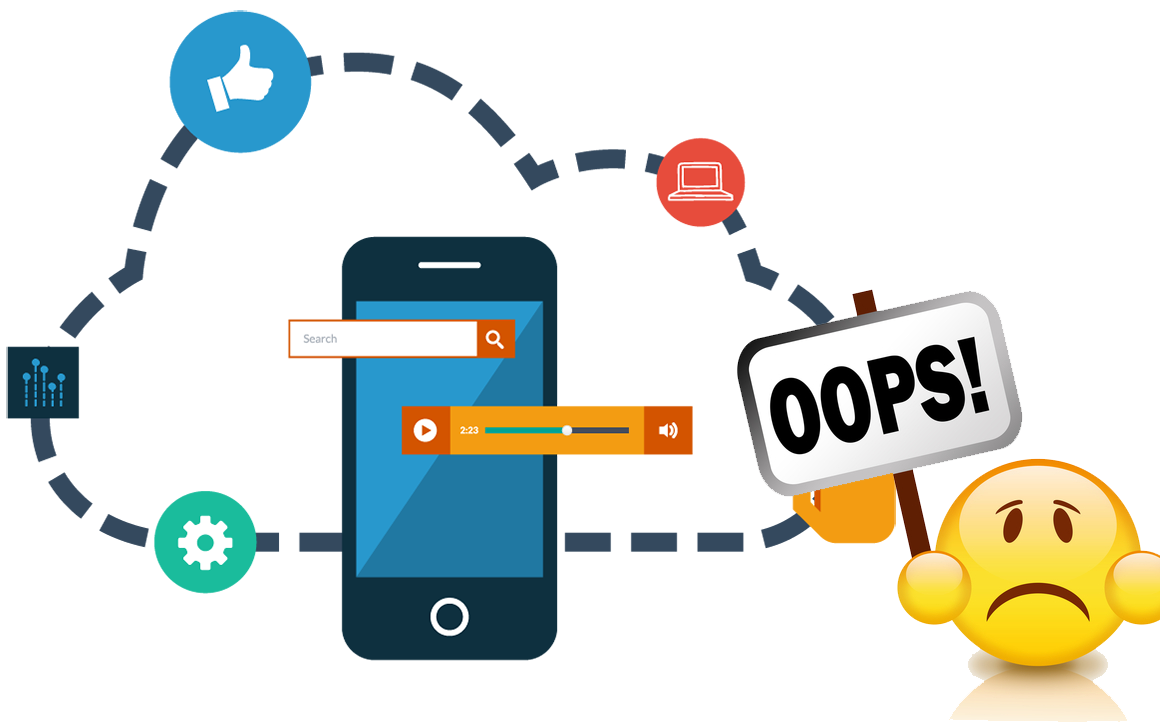Writing application code is no longer a tough task for mobile application developers. Thanks to the latest tools, sophisticated algorithms and a reliable and stable platform. Now you can spur application development.
However, as competition intensifies, the margin of error is insignificant. Hundreds of apps are created and uploaded to the app market every day. As of July 2018, there are more than 2.5 million apps on the Apple App Store and the Google Play Store has more than 3.8 million apps.
How many applications do you use in your phone? If you have additional storage, you can have 10 or 20, or 30. How about the rest?
The rest of your app usually disappears in the wild.
The main reason for the failure of apps is the development mistake that mobile app developers often make. This not only undermines the brand’s reputation in the marketplace but also has a significant impact on the growth of applications.
So in order to avoid stupid mistakes as a developer against such fierce competition, you have to be able to skip the transcendent obstacles.
Here are some of the most common mistakes made by some of the world’s leading app developers. We also provide a way to avoid them.
-
Function Overloading
Companies that want to provide feature-rich applications have installed unnecessary features in their applications. The profitable application market allows companies to invest more effectively in new features and innovations with minimal functionality without adding value.
The company also wants to solve many problems with a single application, which is another important mistake. It not only confuses the purpose of the application to the end user but makes the application awkward and heavy.
That’s why users are switching quickly and easily to mobile apps. If your app is slow and your experience is not desirable, take a few moments to give up your lifetime app.
How do you avoid it?
- Do not complicate things.
- Do not deviate from your core goals.
- It does not compromise the user experience.
- Stay focused on one problem and solve the problem more effectively.
-
Do not analyze target customers.
Mobile app development begins with a comprehensive market research and customer analysis. Developers must understand that they are developing applications for groups of people, not everyone. We cannot aim at society at once. By default, you must have people in your community who will use your app as your target customers. So analyze your behavior, understand your preferences, think about your strategy and build accordingly. Often, application developers will build completely unpopular applications.
How do you avoid it?
- A thorough investigation of the target audience
- Pay attention to current issues.
- Analysis of hourly requirements
- Make a plan to create demand.
-
Ignore Device Compatibility
Developers often miss this problem. Device compatibility is important before application development. Depending on your screen size and resolution, there are multiple devices that you should consider Android, but make sure your app is fully compatible with the latest mobile devices to avoid losing potential users.
How do you avoid it?
- Create scalable and reliable dynamic code across multiple screens
- Test as many different devices as possible (for Android)
Ignore and create a device-independent application.
-
Ignore the beta test
This is one of the mistakes that developers often make when developing new applications. While internal testing is important, beta testing is very important because it requires the actual user who created the application. There is no better way to test your app than end-users. You can clearly understand the applicability of applications (for end-users and markets) and beyond. Their feedback clearly shows how you feel after using the application, and how to improve it before the final release.
Developers tend to release applications without going through a beta test, ultimately putting them in a trap of uncertainty. For most companies, the future looks desperate and leads to absolute failure.
How do you avoid it?
- Do not ignore the beta test phase.
- First, release a beta version for users to test and review.
- Modify existing applications based on feedback
- Update user-friendly version released
-
Do not post app updates
Application improvement is a continuous process that requires the continued efforts of the development team. When an app is online, users rate apps in the app market/app store based on performance, intuitiveness, user-friendliness, and simplicity.
You can also check the performance of your app on a variety of media, including social media, and ask users to view it directly from your app.
You can change the existing functionality of your app by removing or adding apps based on comments to keep users in the app. Regular updates will keep your app active by letting users join the new version.
How do you avoid it?
- Prioritize functions and maintenance checks to improve functions
- Optimize existing applications or add extra features for improved performance.
- Do not ignore periodic version updates.
Last word
Systematic processes using planning strategies can help application development companies avoid these errors. Many problems need to be focused on solving the application but should be done as efficiently as needed.
Over time, do not exaggerate things, track programs, or review applications consistently or improve application versions.
You can contact us with professional guidance to help you build a standalone mobile app. We are proficient in it and are proud of our excellent mobile application development services.
















